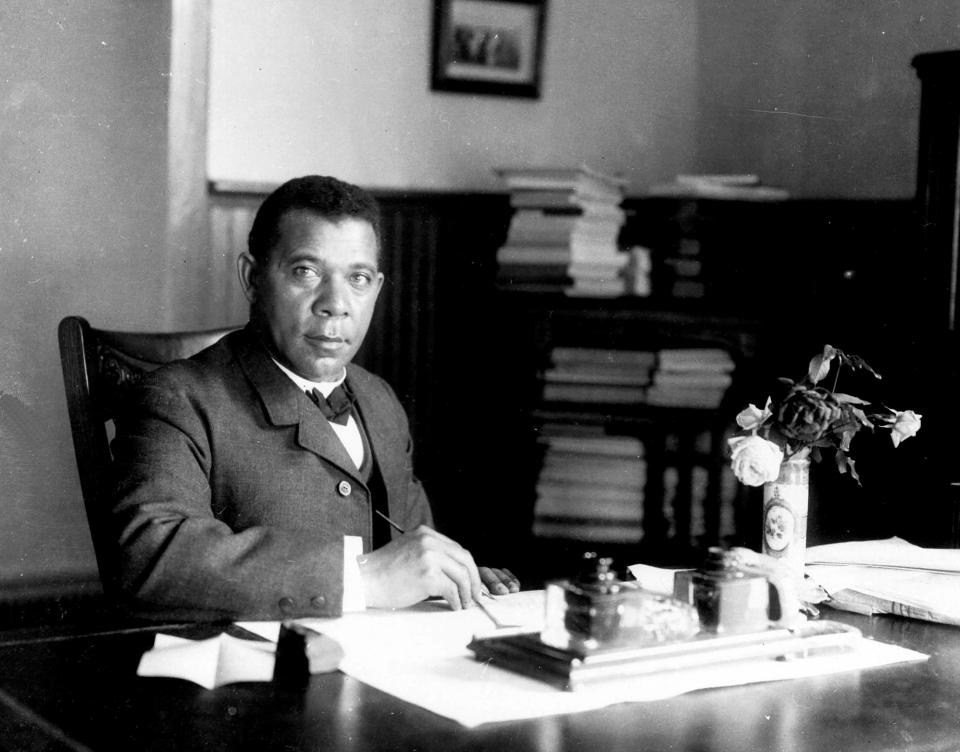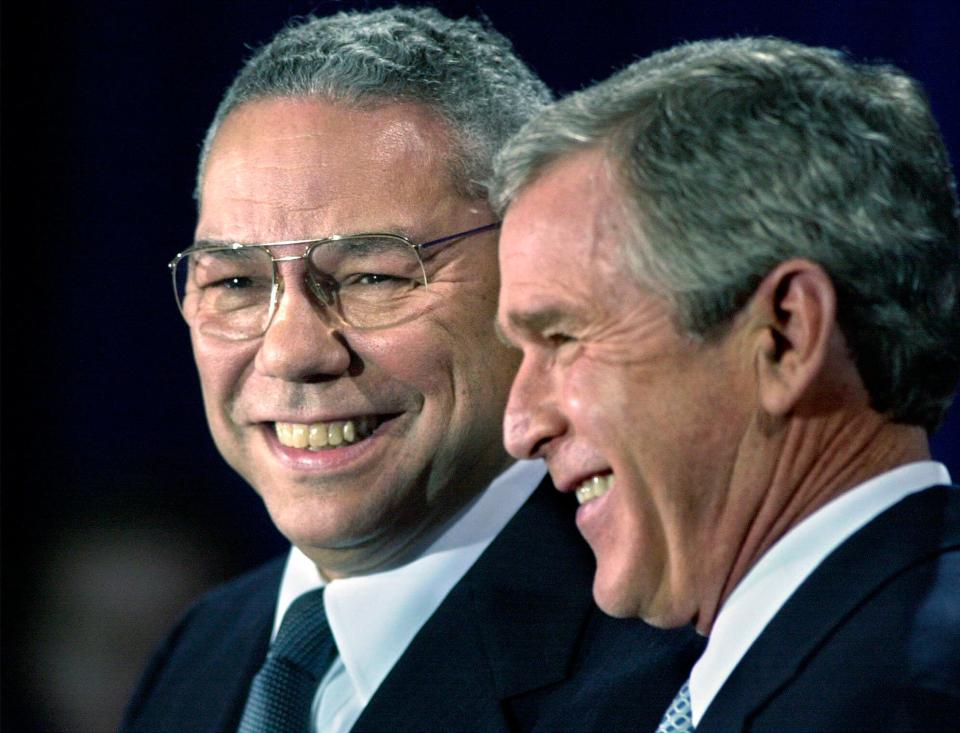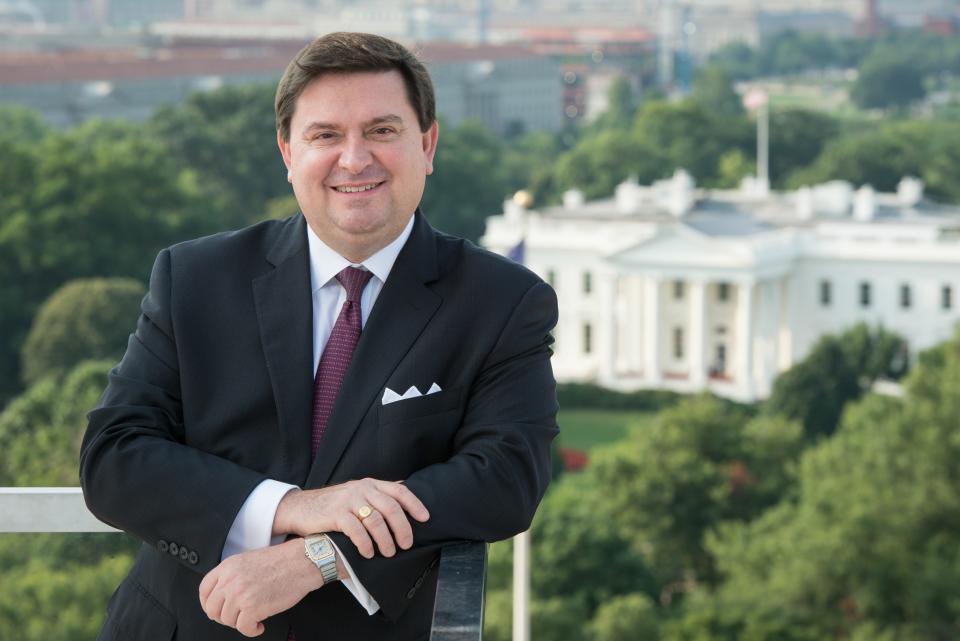How Black people have challenged US presidents to deliver on America's promises
- Oops!Something went wrong.Please try again later.
- Oops!Something went wrong.Please try again later.
- Oops!Something went wrong.Please try again later.
Black History Month is a perfect time to reflect on the lasting contributions that so many Black Americans, famous and anonymous, have made to White House history. Black Americans helped raise its walls. For centuries they’ve done much of the work that makes the White House run.
And in the face of arduous legal, social and political barriers, a multitude of Black Americans – from influential visitors to White House staff and trusted advisers – have opened presidential minds, challenged our leaders to deliver on America’s promises and made history themselves.
A free Black man, Benjamin Banneker, helped map the boundaries of America’s new capital city (and urged future President Thomas Jefferson to add Black Americans to his calls for liberty). For eight years, more than 200 enslaved people were forced to quarry stone, cut timber, make bricks and raise walls and roofs to help build the White House.
Black free and enslaved people played a role at White House
In the decades that followed, free and enslaved Black people were key to the functioning of the White House as it rose to a center of national power. They cleaned the residences, cooked meals, tended horses, and sewed, mended and washed clothes.
They were trusted with the most personal of services like helping presidents and first ladies with dressing and grooming, nursing White House children, greeting guests and waiting on first families as they ate.
White House history: How early presidents failed enslaved people
During the War of 1812, as the British approached to burn the White House, an enslaved man named Paul Jennings helped move George Washington’s portrait to safety. Jennings later helped 77 people in a daring escape that fueled the growing anti-slavery movement in the United States.
Black Americans influenced events during the Civil War. Frederick Douglass helped move President Abraham Lincoln from general opposition on slavery to working to abolish it. He used a White House visit to press Lincoln to pay Black soldiers equal wages and retaliate against Confederate executions of Black prisoners.
Elizabeth Hobbs Keckly, who earned money as a seamstress to buy her freedom, became a dressmaker for first lady Mary Lincoln and tended the Lincolns’ dying son, Willie. She created a charity to support refugee camps of newly freed people in Washington, D.C., and persuaded the Lincolns to support the cause.
The influence of Black people on culture and policy
By the middle of the 19th century, Black Americans were carving out an important place on the White House’s cultural stage. The Fisk Jubilee Singers – who shunned traditional minstrels to introduce the spiritual as an American art form – are believed to be the first Black choir to perform at the White House.
Black soprano Marie ("Selika") Williams’ acclaimed Green Room performance for President Rutherford Hayes in 1878 inaugurated a tradition of “musicales“ that continues today.

But access and influence on policy matters came more slowly for Black Americans. In 1901, Theodore Roosevelt invited the Black educator Booker T. Washington, who advised the president on race relations, to dine with him at the White House – a historic first that triggered scathing editorials. William Monroe Trotter, who founded a newspaper that fought racial discrimination, confronted President Woodrow Wilson in a White House meeting over his decision to allow the racial segregation of government clerks, to no avail.
Black women also played a role in the gradual opening of White House doors. When first lady Lou Hoover included the wife of Black Congressman Oscar De Priest on the guest list for a White House tea in the late 1920s, a controversy ensued. (Mrs. De Priest was able to break ground by attending a separate gathering Mrs. Hoover hosted with more open-minded wives.)
Presidential portraits: Roosevelt, Lincoln and the Obamas. The stories behind iconic presidential portraits.
In 1939, after the Daughters of the American Revolution refused to let Marian Anderson sing at Constitution Hall because she was Black, first lady Eleanor Roosevelt was angered enough to resign from the organization. Marian Anderson did perform – at the White House, at Mrs. Roosevelt’s invitation.
Civil Rights Movement brings changes to White House
As the Civil Rights Movement became a national force in the 1960s, White House doors finally began to open more often. Martin Luther King Jr. and other Black leaders such as Roy Wilkins and A. Philip Randolph began visiting the Oval Office to advise, strategize and put pressure on Presidents John F. Kennedy and Lyndon Johnson to move forward.
When iconic civil rights laws were finally passed, Black leaders were part of the White House signing ceremonies.
The second half of the 20th century also saw Black people breaking into the ranks of senior White House staff and other executive leadership roles:
President Dwight Eisenhower made E. Frederic Morrow the first Black person to serve in an executive presidential staff position, though he was generally disappointed with the administration’s civil rights policies.
Clifford Alexander, a deputy special counsel to Johnson, went on to become the first Black secretary of the Army.
Robert J. Brown developed minority enterprise and Black college programs for President Richard Nixon.
Togo West also served as secretary of the Army under President Bill Clinton, who later appointed him to be the first Black secretary of Veterans Affairs.

In the decades that followed, the influence of Black advisers reached the highest levels of the White House. Former National Urban League head Vernon Jordan became a close confidant to President Clinton. Colin Powell served Presidents Ronald Reagan and George W. Bush as the first Black national security adviser and secretary of State. In 2001, Condoleezza Rice was appointed national security adviser by President Bush then succeeded Powell as secretary of State.
Opinion alerts: Get columns from your favorite columnists + expert analysis on top issues, delivered straight to your device through the USA TODAY app. Don't have the app? Download it for free from your app store.
The Obamas make history
The White House has also served as a stage where Black Americans who have made history are honored with the Presidential Medal of Freedom − pathbreakers like Marian Anderson, as well as Duke Ellington, Jesse Owens, Andrew Young, Jackie Robinson, Ella Fitzgerald, Arthur Ashe, Bayard Rustin, Rosa Parks, Hank Aaron, Maya Angelou, Alvin Ailey, Fred Gray, Toni Morrison, Diane Nash and many others.
For every famous name, there are many more unknown stories of Black achievement and contributions to White House history, including staffers like Lillian Rogers, Alonzo Fields, Preston Bruce and Eugene Allen. And a pair of path-breaking White House correspondents, Alice Dunnigan and Ethel Payne, after whom the White House press room lectern is now named.
In 2009, a Black president and Black first lady entered the White House, a milestone day that some feared would never come. The Obamas were conscious of the centuries of Black history that preceded them.
“The struggles of Rosa Parks and Coretta Scott King were more familiar to me than those of Eleanor Roosevelt or Mamie Eisenhower,” Michelle Obama later wrote in her autobiography. “I carried their histories, along with those of my mother and grandmothers.”
The White House Historical Association works to keep these memories alive, by funding the White House acquisition of works by Black artists and placing markers in Lafayette Park to tell the story of those enslaved workers. (Similar recognition would strengthen the stories told at the White House itself, as well as pre-White House presidential residences in New York and Philadelphia where enslaved people labored.)
Like the hardships and injustices that Black people have faced, Black achievement has been foundational to the American story. The progress we have made and the challenges remaining are just as central to White House history.

Stewart D. McLaurin is president of the White House Historical Association, a private nonprofit, nonpartisan organization founded by first lady Jacqueline Kennedy in 1961.
You can read diverse opinions from our Board of Contributors and other writers on the Opinion front page, on Twitter @usatodayopinion and in our daily Opinion newsletter.
This article originally appeared on USA TODAY: Beyond the White House: Black Americans' influence on US presidents

